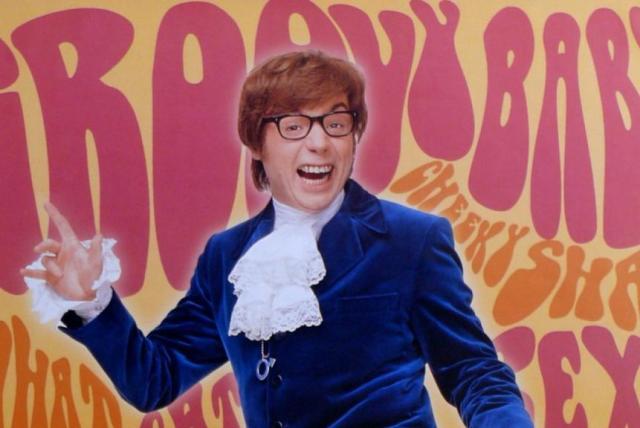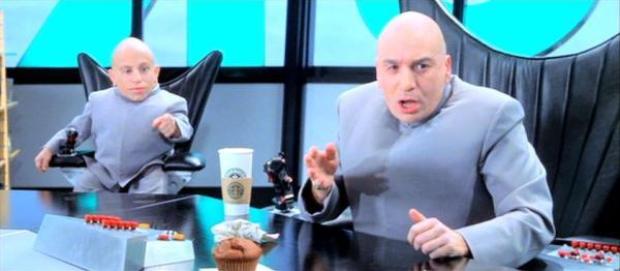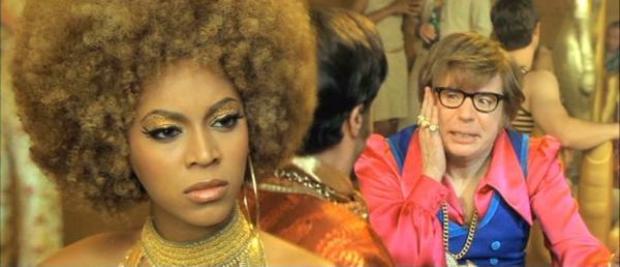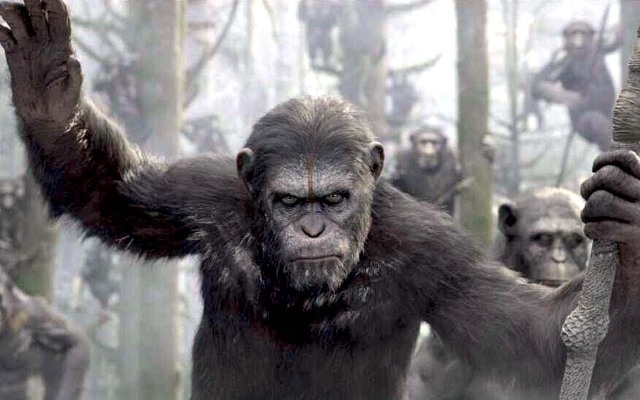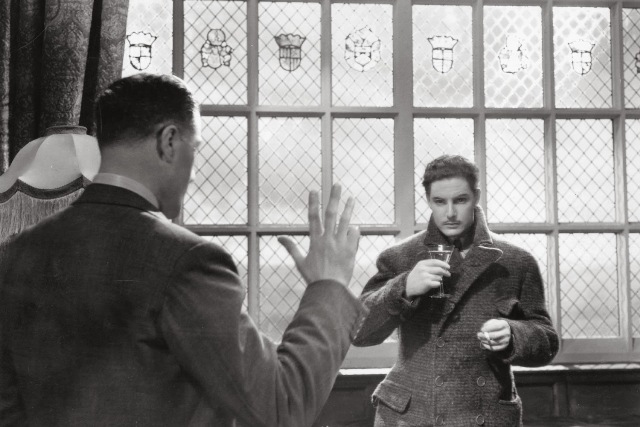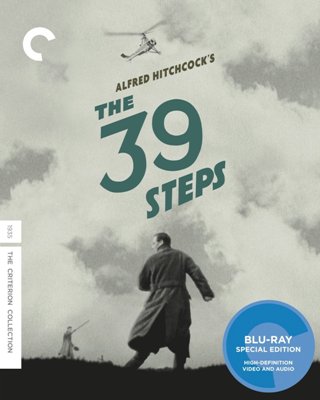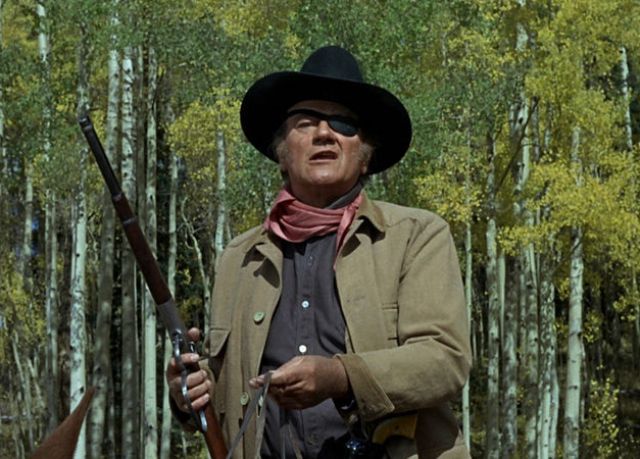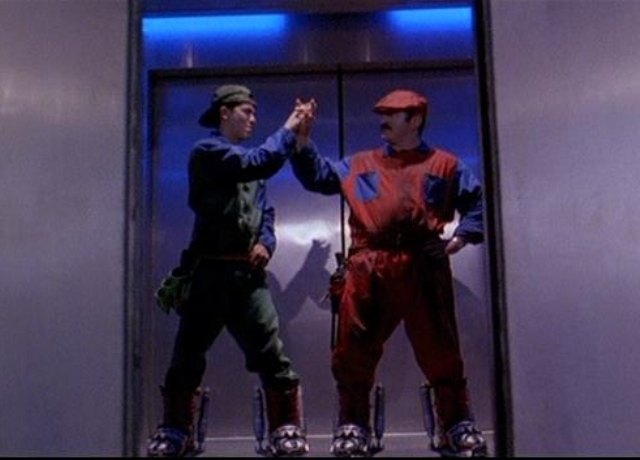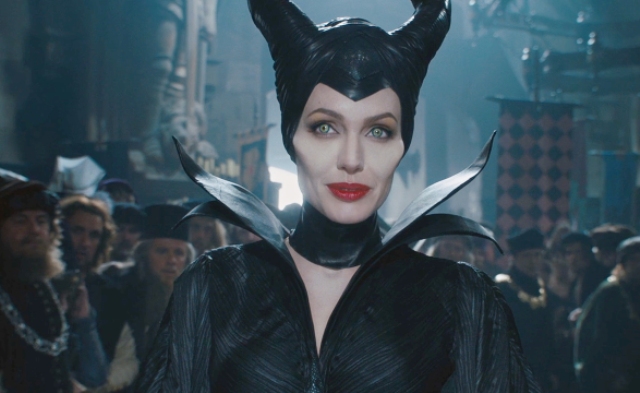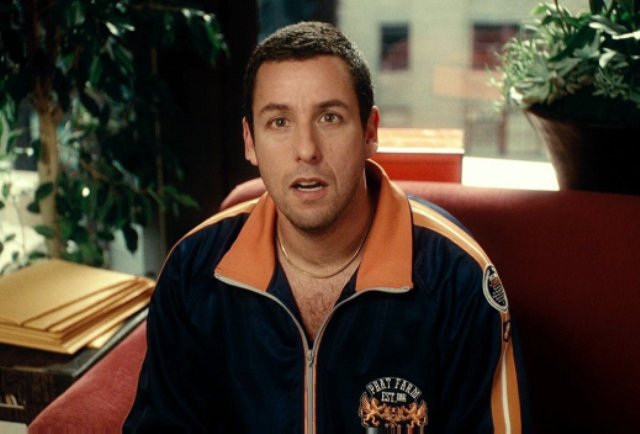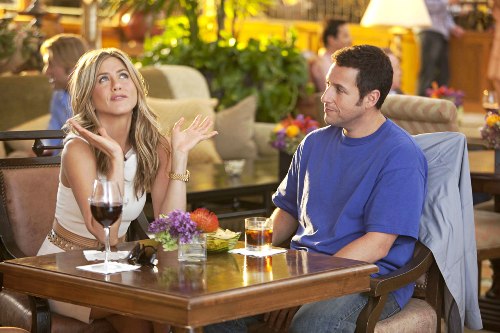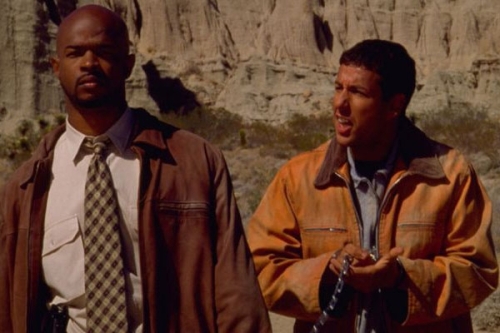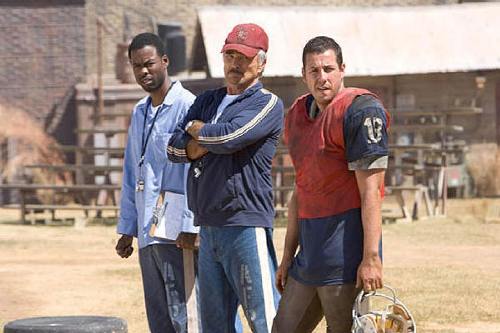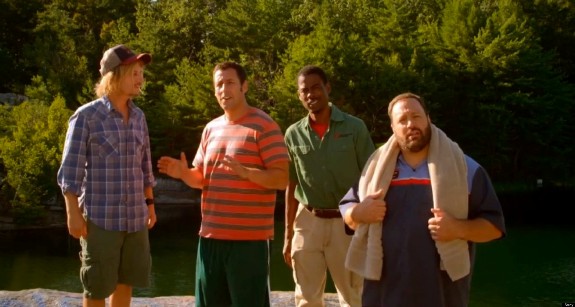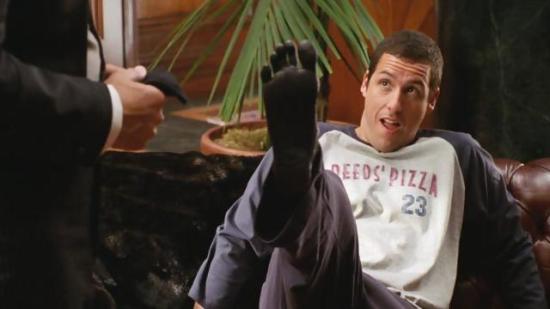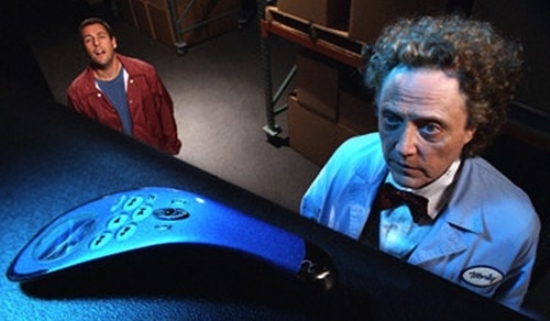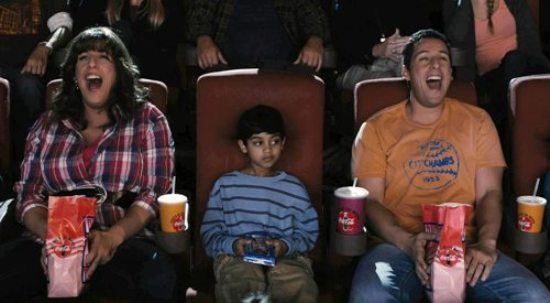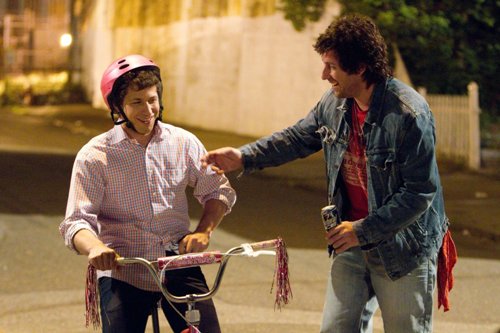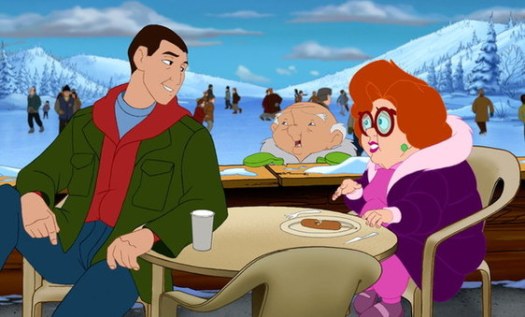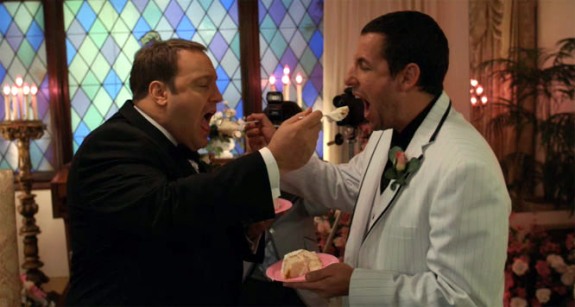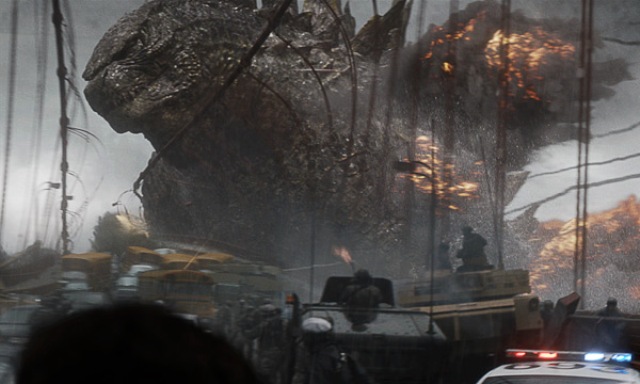One thing that we’ve come to know in the last few decades is that big-budget comedies are going to suck, and also that big-budget comedy sequels are going to suck even more. It’s become an unfortunate trend over the years, all but defining the declining careers of once great comedians like Eddie Murphy and Jim Carrey. And it’s a shame because there was once a time when comedies could be both ambitious and funny. Back in the 80’s, those kinds of movies were very common, like Ghostbusters (1984), The Naked Gun (1988), or Back to the Future (1985); films that were both ambitious in scale and vision, but were also side-splittingly funny on purpose. That kind of movie went away in the decades thereafter, as comedies began to become more grounded and sketchy. The obvious influence of the popular Saturday Night Live series affected many of the movies of this time period, since most of them centered around one or two of the show’s former cast members. The late night show’s legacy has given Hollywood comedies the supply of fresh stars that they’ve needed, but it’s also limited what those same stars can accomplish outside of the show. Again, the changing standards of comedies has made it so that comedy actors have to stay true to their late night image instead of branching out with bold, new ideas. Old timers like Dan Aykroyd and Bill Murray had the advantage of oppurtunities to make a Ghostbusters in a time when your stint on SNL didn’t define who you were. Now, studios would balk at fresh faced sketch performers wanting to make anything ambitious like that today. For many of them, their first starring role in a movie may very well be a feature length version of their popular SNL sketch; and we all know how well those turn out. But if there is one SNL alum who proved to be the last of his kind in this area, it was comedian Mike Myers, who bucked the trend with his popular series of Austin Powers films.
Mike Myers spent seven successful years on Saturday Night Live, from 1989 to 1995, as both a performer and as a writer. He managed to make a mark on the show with popular characters he crafted himself, like the very oddball Dieter and Simon, who reflected his own oddball style. But it was the Wayne’s World sketch that he performed with fellow cast member Dana Carvey that would become his biggest hit. In fact, he accomplished the near impossible by making a successful feature film adaptation of this sketch, even while still performing as the character on SNL. Wayne’s World (1992) and it’s 1993 sequel, are anomalies in the SNL canon, as they are actually funny and manage to retain their identity even at a two hour run-time; only the Blues Brothers had been able to do that before, and no other SNL characters have done it since. In the years that followed, Mike Myers unexpectedly took a hiatus after leaving SNL. In those years, he was no doubt working on what was soon to become the Austin Powers series. With those movies, he managed to create something of a love letter to the movies he watched as a child; mainly spy thrillers and heist movies from the psychedelic 60’s. At the same time, he crafted a really unique character in Austin Powers. Sort of like a James Bond if he were played by Peter Sellers, Austin Powers loves to party and have a “shagadelic” time in bed, while saving the world at the same time. Being both a self-referential parody and a rollicking adventure, the Austin Powers series is definitely unique, and most importantly, very funny. But it also represents one of the last times that a comedy was allowed to be ambitious and even weird. In this article, I’m going to look at the Austin Powers franchise, and how it proved to be a turning point in ambitious epic comedies, being both the genre’s last hurrah, and also a harbinger of it’s decline.
AUSTIN POWERS: INTERNATIONAL MAN OF MYSTERY (1997)
The first Austin Powers is today considered a comedy classic, but it would surprise many of you that it wasn’t a huge box office smash. Released quietly in the spring of 1997, the movie made a modest gross of $53 million, and both critics and audiences didn’t think much of it at first, probably believing the movie was too quirky to be taken seriously. It wasn’t until the film’s home video release that the movie took off. Word of mouth helped to make the film an underground hit and today it is now highly unlikely that you’ll find anyone who isn’t familiar with it. And it’s easy to see what has made this flick such a classic. It’s a perfect example of a parody film done right. It pokes fun at it’s source of inspiration, namely the Bond franchise, but also celebrates it as well. Also helping the film greatly is Myers performance. His Austin is an obvious caricature of the time period, but there’s also a humanity underneath that endears him to the audience. In less capable hands, Austin could have become an obnoxious clown, but thankfully the film makes him a hero worth rooting for, while at the same time laughing at his antics. He’s goofy, but he also has a soul. But probably Myers best work in the film was not in playing the lead, but in creating the film’s antagonist. Pulling double duty, Myers also played the role of the villain; the aptly named Doctor Evil. Evil is an obvious reference to frequent Bond adversary, Blofeld, but Myers added another hilarious layer by giving the character a not-so-thinly veiled voice based on famed SNL producer Lorne Michaels. It’s a clever little touch like that which makes Austin Powers feel so fresh as a comedy and one that is unlike anything else.
What I love best about the movie is that every comedic bit in the film works. They are all perfectly crafted to get a big laugh and they end at just the right moment. Some of the bits even have the confidence to take wild detours without endangering the momentum of the script. Case in point, a scene where Dr. Evil is attending a group therapy session with his son Scott (Seth Green). It has nothing to do with the rest of the story, but it’s so funny that you don’t care if it comes out of nowhere, especially when Evil starts to recount his dark but hilarious backstory. Other bits like Austin being awoken from hibernation in a labratory, and not being able to control the volume of his voice, or Dr. Evil complaining to his subordinate Number Two (Robert Wagner) about not having sharks with lasers on their heads, also contributes to the hilarity. And what really helps to make the movie work most is that there’s not an ounce of cynicism in all of this. Myers doesn’t try to hit you over the head with any message and nothing is presented in a mean spirited way. It’s does what a great comedy always must do, which is to make it’s audience have a good time. In many ways, this was a labor of love for Mike Myers that really paid off and showed that someone could redefine their film career with a fresh new idea executed with ambition and vision. It may not have hit it’s mark right away, but it left an impact that has become hard to top since. In the words of it’s main hero, it was “groovy, baby.”
AUSTIN POWERS: THE SPY WHO SHAGGED ME (1999)
Given the surprise success of the first Austin Powers, it was inevitable that a sequel would follow in it’s footsteps. What took many people by surprise, however, was just how big of a bump the series would get. When the second film, The Spy Who Shagged Me, premiered in the summer of 1999, it actually made more in it’s opening weekend than the first film made in it’s entire run; a whopping $56 million. After that, the final gross ended up at $206 million, showing that not only was Austin Powers a successful franchise, but also a force to be reckoned with. And was the film worthy of the extra bump? Absolutely. It takes everything from the original film and amps it up to 11, making it one of the most ambitious comedy sequels ever made. Thankfully, the good-natured sense of humor is still there, albeit not quite as fresh the second time around. The follow-up takes place right after the first, with Austin again chasing after Dr. Evil, only this time, the two go back in time to the 60’s, reliving their glory days all over again. The film rehashes a lot of popular bits from the first movie (like Will Farrell’s hapless minion Mustafa being not so easily disposed of), but it also newly introduced some of the series most notable features as well. In particular, the addition of the characters Fat Bastard (Myers, once again) and Mini-Me, Dr. Evil’s midget clone. The crude and mean-spirited Mini-Me (Verne Troyer) became one of the franchise most popular characters out of this film, and would continue to become a pop culture punchline well beyond his role in the movie. A running joke about the shape of Dr. Evil’s space ship also became a favorite, and was also a sign that Myers still was able to deliver a lot of fresh and funny gags into this franchise.
Unfortunately, the movie doesn’t hold together as well as the first one. It’s still hilarious, but the consistency of the humor was a little off. Where the original managed to make every bit work cohesively together, The Spy Who Shagged Me tends to have one or two bits that lead nowhere, or end up being not funny at all. The gross out jokes in particular feel rather out of place; especially the ones related to the character Fat Bastard. Also a scene where Austin mistakes a stool sample for a cup of coffee just comes off as cringe inducing and mean-spirited. But that’s thankfully a small portion of the film. Overall, the jokes still hit their mark and the movie does hold up over multiple viewings. This is primarily because the sense of fun is still maintained. Austin is still likable as a character and the series still doesn’t try to take itself too seriously. As a sequel, it actually manages to expand on it’s world, as silly as it is, and shows perfectly that even comedies can be epic sometimes. In this case, it perfectly compliments the Bond films that it’s paroding, which themselves became sillier the more ambitious they got. When most comedies of that era were succumbing to audiences that were becoming less interested in their grand visions, with failures like Ivan Reitman’s Evolution (2001) and Eddie Murphy’s The Adventures of Pluto Nash (2002) being all too common, Austin Powers continued to be the genre’s last true epic series.
AUSTIN POWERS IN GOLDMEMBER (2002)
Here is where we start to see the series coming off the rails. Though still enormously successful at the box office, opening at $70 million and having a final gross of $216 million, it’s clear while watching the movie that the freshness of the original premise has been entirely used up. At this point, Mike Myers was starting to stretch the concept thin, and few if any of the new jokes managed to be memorable at all. The only fresh new idea put into this film was taking Austin back in time again, only now to the 1970’s, which offered a whole new era to poke fun of. If only more could have been made of that. In a way, Austin Powers became a victim of it’s own success; making it reliant on too many of it’s already over-used staple bits. Mike Myers is still funny as Austin, but you can tell that he’s probably had enough with the character, and that he’s just fulfilling an obligation here. The remaining cast also feels the same way. Sorry Beyonce fans, but Ms. Knowles feels particularly out of place in this movie, seemingly cast just for her looks than for any acting chops she has. She especially pales compared to the more timeless qualities of Elizabeth Hurley and Heather Graham in the previous two films, who both seemed to compliment Myers’ over-the-top goofiness much better. Also, the same crude jokes that marred parts of The Spy Who Shagged Me are expanded upon here, and not to good effect. At the same time, it also looked like Myers’ creativity ran out, as his newest character (the titular Goldmember) is about as bland as can be. It may have been the most profitable film in the series, but I doubt anyone today would count this one as among their favorites.
That’s not to say that it fails completely. Goldmember still has it’s moments, and it’s probably the funniest third film in a comedy series that’s ever been made. It starts off spectacularly well with a prologue showing an action packed remake of Austin Powers, with none other than Tom Cruise playing the super spy. Gwyneth Paltrow, Kevin Spacey and Danny Devito also cameo in the prologue as the other cast of characters (no surprise who Devito’s playing), and to top it all off, it’s revealed that Steven Spielberg is directing, making a rare cameo appearance. It’s a great self-referential opening that is definitely worth seeing. Also, the casting of Austin Powers’ father was a brilliant casting coup; the remarkable Michael Caine. Caine’s presence here is a clever nod to the movies that provided inspiration for the character of Austin; old British crime thrillers from the psychedelic era like Alfie (1966) and The Italian Job (1969), of which Michael Caine was the featured star. He’s very funny here as well, especially in a scene where he and Austin speak in true English, which is them basically talking gibberish in a Cockney accent. While these moments do get a genuine laugh, it’s still apperent that the series was running on fumes, and I think Mike Myers himself saw that too. After Goldmember, Myers retired the character and there hasn’t been a follow-up since, though rumors still persist of another film that will probably never see the light of day. So, for the moment, Austin’s reign as a box office champ is complete and it did mark the end of an era in comedy.
Austin Powers’ popularity is out of the ordinary, but it makes sense once you’ve seen the films themselves. The best word to describe the franchise is good-naturred. It’s just there to touch our funny bones and it succeeds with incredible regularity. But, it’s inevitable decline also marked the end for movies of it’s type. While it isn’t responsible for the decline of ambitious, epic comedies, it did represent the last time that Hollywood would ever take a leap of faith on something out of the ordinary in the genre again. Instead, comedies in the last decade have tended to be much smaller in scale, usually depicting a slice of everyday life instead of something weird. Judd Apatow’s buddy comedies come to mind. Even the likes of Eddie Murphy and Adam Sandler have opted to make movies that stick closer to reality; if you could call them that. And if comedians try to do something a little more ambitious and weird, it ends up failing horribly. Myers himself has fallen victim to this, as his 2008 film The Love Guru tried and failed to recapture some of that “mojo” from the Austin Powers series. It’s an unfortunate result for someone who managed to not only capture lightning in a bottle once, but twice with this and with Wayne’s World. But unfortunately that window of opportunity closed with the Powers series and comedies haven’t been the same since. Will Austin Powers ever live again on the big screen, and is it better to let it go, so that another entry won’t get shot down by a less forgiving modern audience? At the very least, this trilogy is still a fine example of ambitious comedy done right, and most of it still holds up many years later. And that is most definitely “shagadelic.”
